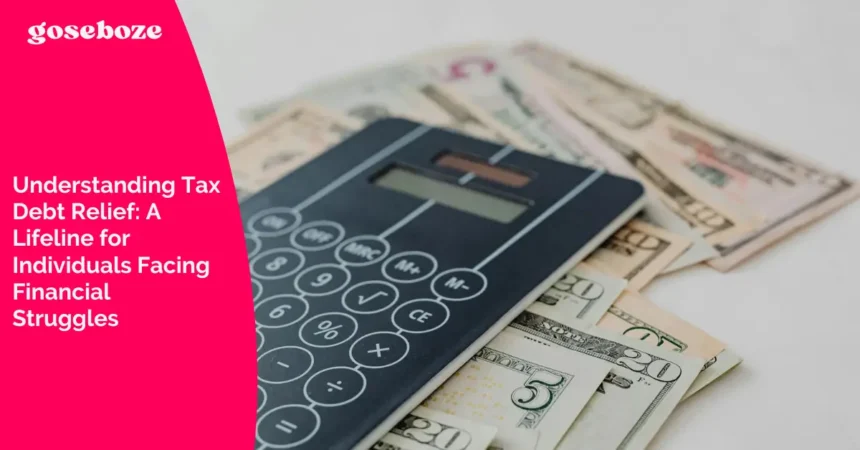When individuals grapple with financial hardships, tax debt can become overwhelming. The fear of mounting interest, penalties, and the possibility of IRS enforcement actions can make the situation insurmountable. Fortunately, programs in place can offer relief, providing individuals with a way out from under the heavy weight of tax debt. Among these, the IRS hardship program is a vital lifeline for many.
This program is designed to help those in financial distress navigate the complexities of their tax obligations and find a path to recovery. This post will explore the importance of tax debt relief and how the IRS hardship program can play a crucial role in easing the financial strain. If you’re uncertain whether you qualify, Understanding financial hardship status is the first step towards accessing this much-needed relief.
What Is Tax Debt Relief?
Tax debt relief includes different official programs and options that help people who cannot afford to pay taxes because of financial difficulties. The relief programs aim to minimize or eradicate tax obligations for qualified taxpayers. Eligible individuals can take advantage of the IRS hardship program, which is one of the leading forms of tax debt relief, by either obtaining reduced debt payments or accepting settlements below full debt amounts. Learning about program operations and qualification requirements helps people achieve better financial stability.
The IRS Hardship Program Explained
The IRS hardship program exists to help taxpayers who encounter severe financial difficulties beyond their control deal with their tax debt obligations. Individuals facing extreme financial difficulties who cannot afford their tax debt may obtain help through this program. The program helps taxpayers resolve their tax debt while creating a sustainable method for them to rebuild their financial stability.
The IRS must prove a severe financial crisis before an individual can qualify for the hardship program. The applicant must show the IRS that debt payment would make it impossible to buy essential goods, including food, housing, and health care services. The IRS evaluates taxpayers’ financial information to establish their eligibility for hardship status. People who receive approval for this program may obtain tax debt relief through payment reduction, collection stoppage, and complete debt elimination.
The Application Process for Tax Debt Relief
Individuals must understand all steps involved in the IRS hardship program application because it presents multiple complexities. The first requirement to gain hardship status is filing all tax returns with current filings before applying for this status. The IRS needs taxpayers to submit financial documents showing their income amounts, current costs, and debts. The financial statement serves as a basis for the IRS’s evaluation of hardship eligibility.
The IRS reviews each submitted application using financial data from taxpayers to establish its qualification status. The IRS grants hardship status to taxpayers, enabling them to access multiple relief opportunities after their application is approved. The application approval procedure takes time, so applicants must maintain open communication with the IRS while remaining patient during their review period.
How the IRS Hardship Program Helps Individuals
The IRS offers an essential program through which people who experience financial trouble can avoid paying their entire tax bill. The program enables people to step away from accumulating debt pressure so they can concentrate on managing their finances. Taxpayers can decrease their payment burden by using the program’s features, which let them pay smaller amounts over time or temporarily stop all IRS collection activities.
Some IRS hardship program participants achieve debt settlement by obtaining payment terms that amount to less than their total tax debt. The program provides substantial help, especially when someone has substantial back taxes they need to address. Taxpayers who face financial trouble can benefit from the offer-in-compromise program, which enables them to negotiate lower payments according to their income levels.
Conclusion
People who encounter severe financial difficulties can obtain essential relief through the IRS hardship program, which is a vital resource. The program gives financial support to taxpayers who cannot afford their taxes by providing them with peace of mind to rebuild their finances while avoiding aggressive IRS collection efforts. The process of obtaining hardship relief depends on proper comprehension of IRS requirements, yet individuals with adequate guidance can establish financial stability through this program. The IRS hardship program is a crucial resource that gives people two options: deferred tax collection and extended payment arrangements to help them manage their debt challenges.







